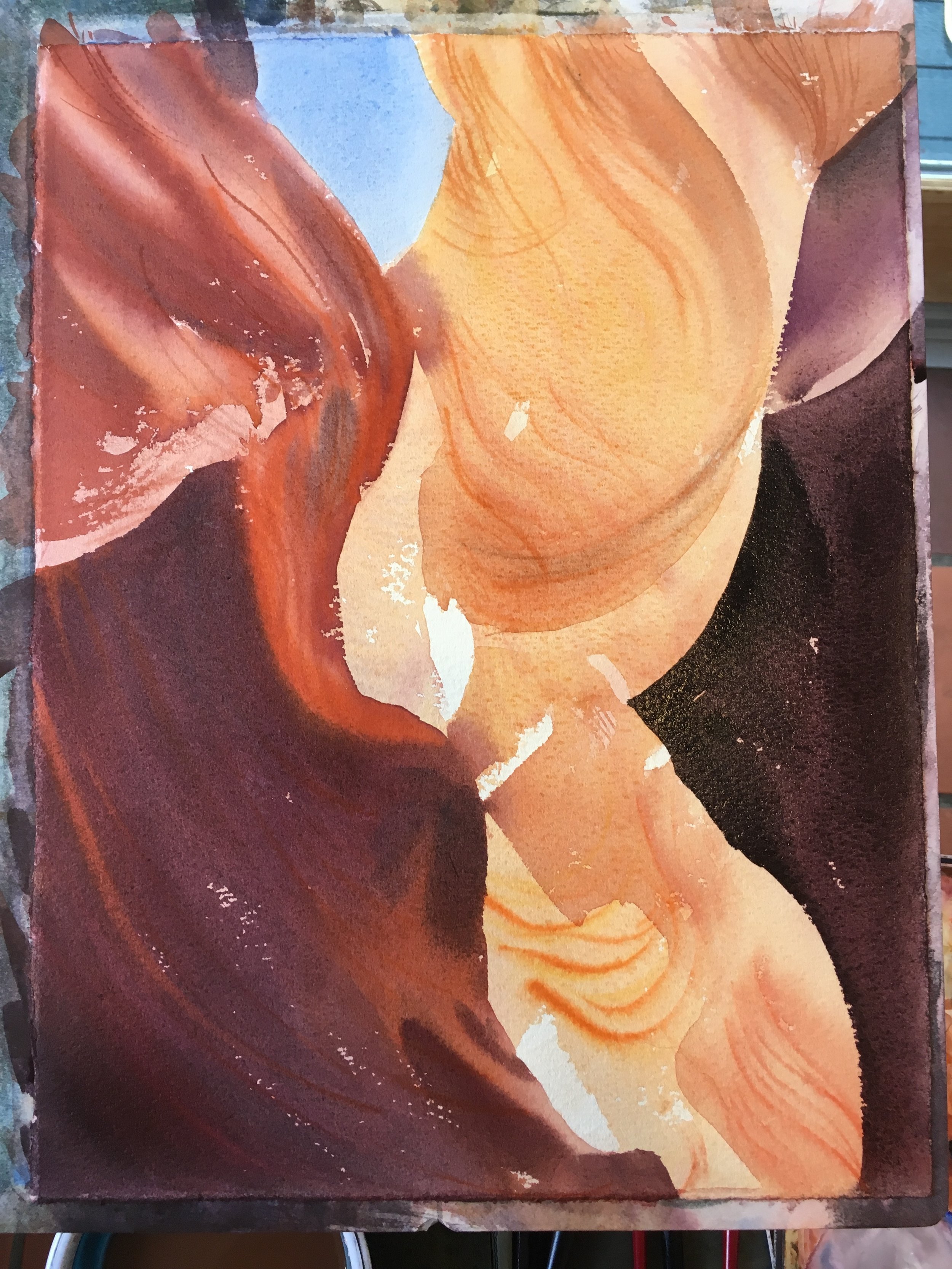Drying Shift- Wet versus Dry Color
In this little post, I wanted to touch on how much watercolor really does lose chroma and value when it dries. Drying shift is real, and your wet mix has to compensate for it. You have to learn to trust it will occur… usually through some repeated failure. ;) As I’ve heard more than watercolor teacher say, “If it looks right wet, then it’s wrong.”
In this first painting (up above), you can see how the shiny purple area of stone is richly colored and dark in value, and yet how much paler and grayed out it is in the final version (below), when the “body” of the water is gone, and the pigment has settled down into the fibers of the paper--
Colors are more vibrant in some other mediums, such as oils or acrylics, because the particles of pigment permanently float in the body of the binder- linseed oil for oils, and acrylic polymer for acrylics (please correct me if I'm wrong!). We use gum arabic or honey, which dissolves in the water as we paint. With watercolors, once the paint dries, the particles float down into the fibers of the paper, where light is scattered and refracted and the color experience gently dulled. This is why applying a light matte spray varnish can make your colors "glow" and become darker- you're lessening the power of the paper to scatter light. Have I ever done that? Nope. But I've read about it, so I guess that makes it hearsay. ;) Perhaps a reader can comment on that.
If you're interested in reading more about these technical elements of binders, papers, and how watercolors (and watercolor papers) reflect and interact with light, you could follow these links to some very interesting sections at handprint.com - The Material Attributes of Paints and The Secret of Glowing Watercolor. It's dense and sometimes (too) technical, but I've learned a lot and consider the website a very good resource.
In this next piece, which in general I actually like, focus in on the bright red flowers in the center, and the orange flower in the upper left. This is early in the painting process, while the paper is still wet and the pigments fresh--
They are all definitely paler and more grayed out in the dried version below--
Sometimes you can remedy a mistake like this by glazing, but some things you just have to let go and accept, particularly if you were painting wet into wet, or have been using bonded, interlocking shapes, such as here. By the time I recognized the issue here, it was really past altering. The original edges to the red flower were all soft and wet-into-wet, and the darker values on top made it very difficult to separate out the original shape. Sometimes, also, you have the right value after drying, but the vibrancy of the wet hue is gone. This causes problems too if you glaze, because you can’t really fix the problem without altering the original value… which can often lead to paintings that are far darker and more brooding than you originally wanted.
This is the sort of painting process that just needs to be done as well as you can the first time through and then let go. “Fixing” the drying shift just makes it worse.



